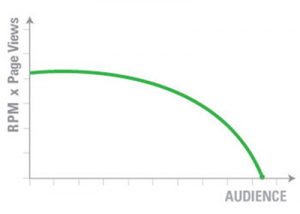Bots Take On Human Behavior, As Google, Facebook Work To Stop Misinformation
Data released this week found that 58.1% of bots identified in February could mimic human behavior, meaning that they can disguise their identity and create fake accounts on social media sites to post propaganda as a genuine user.
Google, Facebook, Microsoft and others have been working to stop the spread of misinformation, but with advanced bots in our midst it becomes easy for countries such as Russia to exploit holes in platforms and spread disinformation about COVID-19.
Radware has been regularly monitoring internet traffic to track the abundance of inaccurate and misleading information that the World Health Organization and the European Union security services frequently warn about.
The report — The Big Bad Bot Problem 2020 — shows that the use of bad bots to disseminate misinformation is likely to increase in 2020 in response to events such as the elections and the COVID-19 pandemic. In 2019, overall bot traffic grew by 10% year over year, of which the bad bot traffic grew by 26%
Social media, ecommerce, and digital publishing have witnessed an unexpected surge in bad bot traffic after the rise of the coronavirus pandemic. These bots executed various insidious activities, including spreading disinformation, spam comments.
Automated attacks on mobile phones and APIs are rising. Bad bot traffic accounted for 15.4% of total traffic on mobile devices and 16.6% of total traffic in 2019.
Last year ecommerce saw the most targeted destructive bots, with nearly 28% of traffic on these sites coming from bad bots.
For ecommerce, humans reached 51.1% in 2019, down from 64.6% in 2018. Good bots rose to 21.2% in 2019, up from 14.8% in 2018. And bad bots rose to 27.7% in 2019, up from 20.6% in 2018.
Travel and hospitality follows. Both industries rely heavily on online purchases. Cybercriminals target their sites with attacks that mainly use human-like and distributed mutating bots to bypass security tools.
Nearly two-thirds of bad bots accessing their web properties are considered sophisticated bots. Marriott disclosed a data breach earlier this week, affecting about 5.2 million customers.
The types of bots targeting the travel industry include distributed, advanced human-like bots at 38.4%; basic human-like bots at 26.1%; headless browsers at 18.6%; and task automation scripts at 16.9%.
Media, publishing and classifieds were the most bot-reliant verticals with the highest portion of good bot traffic. This traffic is mostly used for advertising, SEO, analytics and lead conversion, but their main challenge is to filter out the malicious bot traffic as well as to correct marketing analytic tools. It’s common for competitors across media and publishers to scrape data and content or attempt to skew the analytics of the media campaigns causing further harm by leading the targeted publisher to make bad decisions that are based on false data.
For media and publishing, humans reached 50.3% in 2019, down from 54.7% in 2018. Good bots came in at 28.6% in 2019, up from 26.4% in 2018. And bad bots rose to 21.1% in 2019, up from 18.9% in 2018.
While data hunted by cybercriminals varies from one vertical to another, being safe and aware can make the difference.
(19)
Report Post






